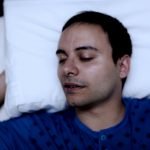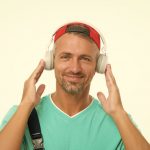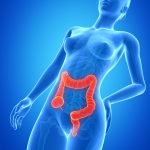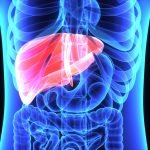Throwing the Baby Out With the Bathtub
Infertility and Traditional Treatments
Sussanna Czeranko, ND, BBE
Amongst the innumerable treatments in the great domain of Natural Methods of Healing, the Thure Brandt method is the most unique.
-Carola Staden, 1900, p. 23The fact that the native woman of Africa, of the Sandwich Islands, of the South American bush and our western plains, is practically exempt, indicates that the cause of suffering must lie in artificial habits of living and in the unnatural treatment of diseases.
-Henry Lindlahr, 1913, p. 79If the encumbrance is not too great and the body still has a certain amount of vital power, sterility can be cured.
-Louis Kuhne, 1918, p. 639
The National Infertility Association estimates that infertility affects 7.3 million people in the United States, or one in eight couples (National Center for Health Statistics, 2002). As these infertility rates rise in Western countries, we cannot help but to feel compassion for those families trying desperately to be blessed with children. Today, infertility is epidemic, affecting 12% of women in the United States (Dworkin-McDaniel, 2011). For infertile couples, the prospects for interventions and solutions come at a great cost, namely, the invasive nature and potential danger of assisted reproductive technology (ART) and intrauterine insemination (IUI). These choices are not only exorbitant monetarily but are also riddled with long-term dangers. As the Western biomedical paradigm explores the boundaries of technology to facilitate birthing choices for women, the outcomes may not be fully desired.
Complications of ART
For the arduous and persevering efforts of couples, how harrowing it is when ART does not work as planned. The use of ART is associated with complications, including the following:
ART is associated with multiple births (Schieve et al., 2002; Land & Evers, 2003).
The use of ART increases the risk for placenta previa. A six-fold higher risk for placenta previa was reported in singleton pregnancies conceived by assisted fertilization compared with that in naturally conceived pregnancies (Romundstad et al., 2006).
Ovarian hyperstimulation syndrome (OHSS) is caused by the use of fertility medication when undergoing IUI. While experiencing OHSS, a woman’s ovaries swell after taking fertility medication.
The uncertainty about healthy offspring with the use of ART is being questioned: “There is evidence of an increase in chromosomal abnormalities among pregnancies conceived using intracytoplasmic sperm injection and low birth weight and preterm delivery among singletons conceived with all types of ART” (Schieve et al., 2004, p. 1154).
Genetic mutations resulting in subfertility are reported in boys born to couples using ART (Meschede et al., 2000).
ART is associated with a significant increase in chromosomal aberrations (Land & Evers, 2003).
The use of ART results in low and very low birth weight (Schieve et al., 2002).
ART causes a higher incidence of some types of cancer in women: “Hormonal and reproductive factors are involved in the aetiology of breast cancer and cancers of the female genital tract” (Land & Evers, 2003, p. 456).
This list is just the beginning. The research indicates that the long-term damage and effects are still unknown. Land and Evers, who have investigated the complications of ART wrote: “In spite of [ART’s] established efficacy, little attention has been paid so far to the safety of ART, i.e. to its adverse events and complications” (2003, p. 455). Despite such dangers, more couples opting for a chance of having a family are increasingly turning to ART:
According to CDC’s 2010 ART Success Rates, 147,260 ART cycles were performed at 443 reporting clinics in the United States during 2010, resulting in 47,090 live births (deliveries of one or more living infants) and 61,564 infants. Although the use of ART is still relatively rare as compared to the potential demand, its use has doubled over the past decade. Today, over 1% of all infants born in the U.S. every year are conceived using ART. (Centers for Disease Control and Prevention, 2012)
Recently, I attended the American Association of Naturopathic Physicians annual conference and listened to an excellent lecture designed to familiarize NDs with the ART movement. By making dietary recommendations to patients who opt for the fertility clinic’s scientific magic, it seems that NDs might have a safe and nonthreatening place within the medical topography. Although providing dietary counsel to those embarking on the rough ride of the biomedical road is desperately needed, the question arises whether we are fulfilling our obligation as primary health providers by sitting in the background. Is it not time for us to assume our place and be the primary health providers that we were trained as and use the tools that we were educated in? Are we helping people achieve optimal health by using only our nutritional knowledge to counsel them? We have many modalities, rich and diverse. Let us use them all in a naturopathic integrative treatment plan just as our elders did when they treated women faced with infertility. The contemporary ND has much to contribute to the sometimes desperate quest of infertile couples. Indeed, our elders used powerful strategies that can be revisited. They felt confident about administering care to men and women facing such a challenge. We know that women, historically, have been the guinea pigs of Big Pharma, and to abandon women now to that realm dilutes and disrespects the work (and I mean hard work) and sacrifices of our elders.
The early NDs did not encounter infertility rates of the same order as today. Statistics easily grab our attention and encourage a quick reality check. More than 70 years ago, Bernarr MacFadden wrote, “Perhaps not three percent of married women are positively sterile” (1940, p. 1581). MacFadden is one among many naturopathic pioneers who were concerned with this issue. While researching the Benedict Lust journals, I found several authors whose work contemplated the issue of women’s suffering and infertility. Let us have a look at their story, with the goal of learning what our forebears did to help the desperate yearning for children by barren North American couples before biomedicine dominated the healthcare landscape.
Fashion and Society’s Role in Women’s Poor Health
The story begins on the outside and ends inside. During the early days of naturopathy, women still wore disfiguring corsets and suffered greatly. The prevalence of uterine displacement was estimated by one physician, J. Walker, “to exist in more than 70% of the women … probably of tight lacing and carelessness during the menstrual period” (1910, pp. 680-681). The NDs knew this garment was injurious and abusive. Shine pointed out:
The body must not be cramped in any part or compressed, for then the vital organs are pushed out of shape and place and the circulation … is obstructed, and the wonder is, not that women have poor health and various derangements, but that they have any health at all. (1910, p. 269)
The early NDs advocated for simple, comfortable clothing for women. They counseled their female patients to avoid the conforming fashion of the time to reduce suffering. Shine insisted:
[W]omen will suffer the greatest misery of body all the years of their lives, spend many weeks on sick beds, go to hospitals and endure operations and pay great sums of money for all these privileges, for the sake of stylish clothes. (1910, p. 269)
While their allopathic counterparts at the time had little or nothing to say about the matter, the naturopathic message to women was that they should make their clothing simple and comfortable. As Shine put it, “The ideal dress is simply beautiful and beautifully simple” (1910, p. 270).
Even at the turn of the 20th century, women made up the majority of patients seeing physicians. One might think, then, that women’s health issues would have found a more prominent place in the focus and treatments of biomedicine; however, the historical record suggests that women’s health resided at a far lower level of priority, virtually occupying the bottom of the health concerns barrel. Lahmann, for example, was alarmed by the barbaric treatment of women by conventional medicine. He wrote that “75% of all patients are of the female sex, and that women above all have to suffer fearfully from medical treatment” (Lahmann, 1900, p. 73). In this case, Lahmann was speaking about the widespread and protracted use of pessaries (rubber rings) and tampons to alleviate a prolapsed uterus. Lust (1905, p. 138) described other surgical interventions such as burning, cauterization, cutting, and scraping as characteristic of the dreaded plight that women faced when allopaths responded to unexplained bleeding or abdominal symptoms. Lindlahr wrote on the topic of women’s suffering too. He pulled no punches by insisting that “suppressing inflammations with poisonous drugs, curetting, replacing or removing the affected organs with the knife does not correct the problem” (Lindlahr, 1913, p. 79).
Such treatments invariably led to new symptoms and complaints. As an example, corsets and the tight lacings maligned women’s internal organs, and it was common for women to “complain of sick-headache, palpitation of the heart, dizziness, pain in the stomach, buzzing in the ears, cold feet, etc” (Lust, 1905, p. 137). We must keep in mind that women at the time were routinely diagnosed as having “hysteria,” a condition with a wide berth of symptoms faulted to a displaced uterus. Lust and others cautioned against popular but what they considered to be powerless allopathic interventions for these symptoms. He wrote:
One physician gives antipyrine for headache, the other one bromide of potassium for dizziness, the third Karlsbader salt for a supposed catarrh of the stomach, the fourth even digitalis for palpitation of the heart, the fifth iron for anemia, which only increases the action of the heart and ruins the stomach. (Lust, 1900, p. 75)
Dr Prager summed up Lust’s concerns: “[Female troubles] are woefully neglected by physicians” (1905, p. 326).
Impure Blood
Numerous early NDs attributed female reproductive health problems to impure blood. Lust wrote: “Through improper nourishment [women] overload the blood with impurities … and thus lay down the foundation for the bad condition of blood; this causes weakness and weakness is the beginning of all diseases” (1905, p. 138). In women, the weakness would manifest in the womb. Lust outlined the consequences of impure blood in the uterus, which he noted will “badly nourish the muscular tissues of the womb; the latter will become relaxed, the ligaments of the womb are not able to keep it in the right position” (1905, p. 138).
Poor digestion and impure blood were associated with morbid matter, which affected menstruation. Kuhne noted: “If the menses are too abundant or too scanty, if the menstruation remains away, or is irregular, this all forms an unmistakable proof of the presence of an encumbrance of morbid matter” (1918, p. 636). Others confirmed Kuhne’s conclusions that dysmenorrhea was attributed to poor blood caused by a poor diet and that menorrhagia was caused by poor blood, weakness and lax uterus, inflammation or growths, and abortion (Astro, 1915, p. 782).
For Kuhne, digestion was paramount. He wrote: “The abdomen [is] the starting point of the causes of all diseases,” sterility included (Kuhne, 1918, p. 638). Kuhne found that many women felt perfectly healthy but were unable to conceive. His conclusion was clear: “This is a gross error, of course for sterility always signifies the presence of a serious encumbrance, particularly of the sexual parts—the ovaries, Fallopian tubes, uterus, etc” (Kuhne, 1918, p. 638). In Kuhne’s opinion, “if the encumbrance [of morbid matter] is not too great and the body still has a certain amount of vital power, sterility can be cured” (1918, p. 639).
The Thure Brandt Massage
One treatment that gained the attention of the early nature physicians in 1900 was developed by a Swedish masseuse, Thure Brandt. The procedure involved “an internal massage for the treatment of female pelvic diseases and displacements” (Staden, 1900, p. 23). Carola Staden, Lahmann, and Lindlahr were advocates of the Thure Brandt massage in their practices. Lahmann extolled the virtues of the Thure Brandt treatment:
It stands to reason that massage, when applied to the diminished and weakened smooth muscular fibres of the flaccid womb, must of necessity raise the status of their nutritive capacity and by removing the cause, ultimately bring about a thorough radical cure. (1900, p. 74)
Another who iterated the virtues of the Thure Brandt technique was Lindlahr himself. He wrote: “By means of this internal manipulative treatment, adhesions, displacements, weakness of ligaments and muscles, tumors and inflammations can be corrected without knife or drugs” (Lindlahr, 1913, p. 80). Lindlahr used this therapy with good success but applied an integrative approach, finding other therapies equally useful. He continued:
I found that correction of spinal and pelvic lesions and consequent removal of irritation and pressure on the nerves, the cure of chronic constipation and malnutrition by pure food diet and hydrotherapy, the strengthening of the pelvic muscles and nerves by means of active and passive movements and exercises, were fully sufficient to correct the local symptoms in a natural manner. (Lindlahr, 1913, p. 80)
Lindlahr reported successfully treating 2,000 cases using his integrated and naturopathic approach.
That women who had borne children developed pelvic weaknesses was completely understandable to the early NDs, most particularly because women had to assume completely unnatural positions during childbirth. Standard birthing practices resulted in the risk. For example, Lahmann specified the threat of rupture:
A rupture of the perineum or of incisions with the surgical knife or of ruin to the fundus … from loss of elasticity, during a long and wearisome childbirth in the usual wretched dorsal or lateral position the whole weight of the child is centred on the perineum, stretching it to the point of rupture. (1900, p. 74)
The literature demonstrates that Lahmann and other NDs frequently recommended the sitting position for easier childbirth.
Besides the Thure Brandt massage, water treatments also had a place in the therapeutic protocol of infertility and gynecology. Hydrotherapy helped move blood and remove the morbid matter. With hydrotherapy as a chief modality, the early NDs confidently addressed the problem of infertility. Water applications such as the knee and upper douche were favored by Benedict Lust. He felt that these douches helped to distribute the blood away from the reproductive organs (Lust, 1905, p. 138). He also used “the lower pack” and did so “by dipping the linen cloth in water of 60° F; the cloth must be sufficiently wide to cover the hips well” (Lust, 1905, p. 138).
Another prominent ND of the time, Dr Pragner, presented a case history of a woman who miscarried and could not conceive for 7 years. She consulted many, without any luck. Pragner diagnosed her as having reclination of the womb and anemia. He prescribed “the natural diet, water cure [half and full ablutions, sitz and full baths], massage of the whole body and the Thure-Brandt massage of the abdomen” (Pragner, 1905, pp. 165-166). Pragner used the Thure Brandt massage successfully in many such cases of infertility. Kuhne treated infertility by removing morbid matter.
It is enlightening to discover the frequency and effectiveness of the protocols of our elders. The literature of the time not only indicates treatment preferences but also is rich in descriptive information about methodology. In Kuhne’s case, the removal of morbid matter was, in his view, not only safe, but it worked. He gave an example of a case:
A lady who had already been married for eight years, had the strongest desire to become a mother, and yet had found no aid even from the [best] specialists. Finally, she came to consult me. I explained to her that her barren condition had its origin in a serious encumbrance of the abdomen, and that the first thing should be to remove this morbid matter. Only in this way could she attain fulfillment of her wish. My prescription was two to three friction baths daily, unstimulating diet and a natural manner of living. (Kuhne, 1918, p. 639)
Kuhne reported that the woman conceived after a few months on this program and delivered a healthy child.
Conclusion
These cases illustrate that simple measures such as diet, hydrotherapy, and physical manipulation were frequently successful in helping women conceive and deliver healthy children. Women a century ago had their own hardships and obstacles to conception, and it is relevant to extrapolate some valuable lessons here. Women today are faced with exogenous toxins and endogenous toxins. They lead very stressful lives. Obesity, indigestion, and constipation are huge endemic problems. Cold-water packs, sitz baths, and compresses are as valuable today as they were a century ago to help women detox, destress, normalize metabolism, and reduce weight, all of which can dramatically assist in fertility concerns. The terminology and treatments of our naturopathic pioneers may seem outmoded to some or even irrelevant, but the literature attests to the rich repertoire of therapies, treatments, protocols, and practices that naturopathy had to offer women, and which today can be equally powerful for couples questing resolution to fertility issues who are wary of ART and IUI.
Let us turn to an early 20th century ND, Carl Schultz of the Naturopathic Institute, Sanitarium and College of California, who reminds us yet again of the true mission of naturopathic medicine and of what we do as NDs to achieve that goal every day. He wrote: “First, Naturopathy teaches the people how to keep well and how to raise healthy children and by that a healthy Nation” (Schultz, 1905, p. 217). He continued:
What a physician needs is common sense, the gift of observance, love for his fellow man, love for Nature, the gift to understand Nature, and the ability to teach others how to live and to understand the laws of Nature. (Schultz, 1905, p. 218)
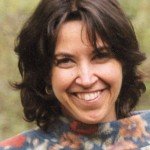 Sussanna Czeranko ND, BBE is a naturopathic physician licensed in Ontario and in Oregon, practicing since 1994. She incorporates “nature-cure” approaches systematically into primary care by including Balneotherapy, Breathing therapy and Nutrition. As the Rare Books Curator at NCNM, Dr Czeranko is currently compiling an eleven volume series titled, In Their Own Words, based upon the Benedict Lust journals published early in the last century. As the founder of the Breathing Academy, a training institute for naturopaths, she facilitates the incorporation of the scientific model of breathing therapy called Buteyko into their practices.
Sussanna Czeranko ND, BBE is a naturopathic physician licensed in Ontario and in Oregon, practicing since 1994. She incorporates “nature-cure” approaches systematically into primary care by including Balneotherapy, Breathing therapy and Nutrition. As the Rare Books Curator at NCNM, Dr Czeranko is currently compiling an eleven volume series titled, In Their Own Words, based upon the Benedict Lust journals published early in the last century. As the founder of the Breathing Academy, a training institute for naturopaths, she facilitates the incorporation of the scientific model of breathing therapy called Buteyko into their practices.
References
Astro. (1915). Menstruation. The Naturopath and Herald of Health, 20(12), 782.
Centers for Disease Control and Prevention. (2012). What is assisted reproductive technology? Retrieved August 1, 2012, from http://www.cdc.gov/art/
Dworkin-McDaniel, N. (2011, October). The invisible pain of infertility. Redbook. Retrieved October 4, 2012, from http://www.redbookmag.com/health-wellness/advice/dealing-with-infertility
Kuhne, L. (1918). Diseases of women. Herald of Health and Naturopath, 23(7), 635-651.
Lahmann, H. (1900). The barbarous treatment employed in female complaints. The Kneipp Water Cure Monthly, 1(5), 73-75.
Land, J. A., & Evers, J. L. (2003). Risks and complications in assisted reproduction techniques: Report of an ESHRE consensus meeting. Human Reproduction, 18(2), 455-457.
Lindlahr, H. (1913). Woman’s sufferings. The Naturopath and Herald of Health, 17(2), 79-81.
Lust, B. (1900). Abdominal complaints of women. The Kneipp Water Cure Monthly, 1(5), 75-76.
Lust, B. (1905). Abdominal troubles of women. The Naturopath and Herald of Health, 6(11), 137-138.
MacFadden, B. (1940). The encyclopedia of health and physical culture. New York: MacFadden Book Company.
Meschede, D., Lemcke, B., Behre, H. M., De Geyter, C., Nieschlag, E., & Horst, J. (2000). Clustering of male infertility in the families of couples treated with intracytoplasmic sperm injection. Human Reproduction, 15(7), 1604-1608.
National Center for Health Statistics, U. S. Department of Health and Human Services. (2002). National Survey of Family Growth (NSFG): Cycle 6. Retrieved October 4, 2012, from http://aspe.hhs.gov/hsp/06/catalog-ai-an-na/NSFG.htm
Prager. (1905). Female troubles. The Naturopath and Herald of Health, 6(11), 326-327.
Pragner, K. (1905). Sterility in women and its treatment. The Naturopath and Herald of Health, 6(6), 165-166.
Romundstad, L. B., Romundstad, P. R., Sunde, A., von Düring, V., Skjaerven, R., & Vatten, L. J. (2006). Increased risk of placenta previa in pregnancies following IVF/ICSI: A comparison of ART and non-ART pregnancies in the same mother. Human Reproduction, 21(9), 2353-2358.
Schieve, L. A., Meikle, S. F., Ferre, C., Peterson, H. B., Jeng, G., & Wilcox, L. S. (2002). Low and very low birth weight in infants conceived with use of assisted reproductive technology. New England Journal of Medicine, 346(10), 731-737.
Schieve, L. A., Rasmussen, S. A., Buck, G. M., Schendel, D. E., Reynolds, M. A., & Wright, V. C. (2004). Are children born after assisted reproductive technology at increased risk for adverse health outcomes? Obstetrics and Gynecology, 103(6), 1154-1163.
Schultz, C. (1905). Naturopathy. The Naturopath and Herald of Health, 15(8), 216-219.
Shine, M. G. (1910). Ideal dress for women. The Naturopath and Herald of Health, 15(5), 269-271.
Staden, C. (1900). The Thure Brandt system. The Kneipp Water Cure Monthly, 1(2), 23.
Walker, J. W. W. (1910). Diseases due to the derangements of the pelvic viscera. The Naturopath and Herald of Health, 15(11), 679-682.




